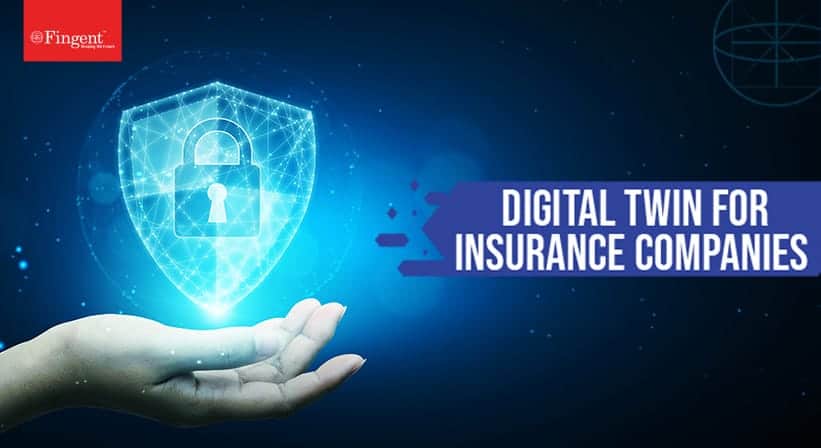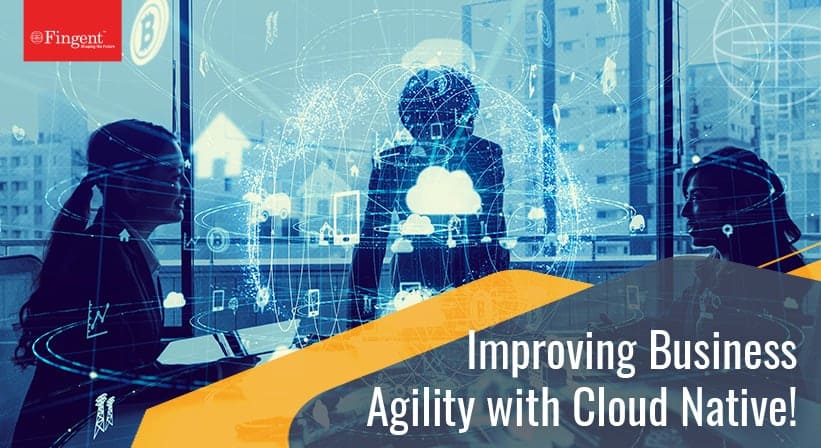Category: Digital Transformation
AI continues to positively disrupt businesses around the world by empowering them with automation and data-driven insights.
In this video, Deepu Prakash, Head of Process and Technology Innovation at Fingent shares his expertise on deploying AI within the context of the modern business environment. He puts forth five crucial steps that you can begin right now to shift your company into an AI-driven model systematically.
Stay up to date on what's new

Featured Blogs
Stay up to date on
what's new



Talk To Our Experts
Opting for the Best Property Management Software
Leasing out condos or premium apartments to buyers does not end with the handover. Instead, it goes a long way almost in a cyclical manner to oversee the operations and management via close monitoring. Dynamically managing multiple residential or commercial real estate establishments could, in fact, prove to refine it all together as well as endow a consistent experience to the tenants.
The landowner or a real estate company benefits from able to supervise every cent of property they own and leases. It equates to improved productivity enabling the owner to gain a competitive advantage by striving for customer satisfaction at every fronts. This could be a rather not brief definition of property management. And with technology like software integrated into it, we can christen it aptly as property management software.

Investing in an apt property management software elevates and rethinks how realtors or landlords manage their swathes of property. Whether small modular condos, high rises or dedicated commercial hubs, property management using software takes it to the next level. The need to switch becomes more prominent as conventional methods have often failed to demonstrate exemplary levels of property management.
Software alters it into a convenient dashboard, where the owner could simply manage, monitor and operate day to day activities linked to a piece of real estate. Ensuring timely rental payment, maintenance and upkeep, searching tenants for occupying could all be effectively carried out using a property management software. The key is to opt for the right one since the wrong choice would end up curtailing existing practices by cutting out efficiency.
Clinging to Conventional Practices Risks Lagging Behind
As it turned out, property management involves a lot of hurdles that leave the owner frustrated and stressful at times. The job profile when it comes to managing multiple portfolios of real estate assets dispersed across varied locations coupled with maintenance requests, tracking lease expires, routine inspections, ensuring regulatory compliance, responding to inquiries concerning vacant properties and lot others would be equally challenging.
Extensive documentation remain a core aspect when it comes to property management. Besides, the above-mentioned aspects when not managed appropriately could add up to the inefficiency of the job, which reflects in the productivity and performance. Property management software is new and adopting it will definitely warrant less clutter involved in the process. Still, adhering to conventional practices like paperwork or documentation proves time consuming and cumbersome.
The right property management software makes life easy for property managers, improving their productivity and contributing to improved customer satisfaction in a big way. In fact, the right software becomes a valuable source of competitive advantage, enabling the firm to gain a one-up on competition through efficiency improvements and by spawning innovative business practices.
However, the trick is to have the right property management software on hand. Here are some ways to identify and deploy such software.
Good Property Management Software Distinguishes with Ease of Use

The whole purpose of deploying software is to ease things. Software with poor UX, and or convoluted processes, which is a pain to operate, defeats the very purpose. The best software has a smooth interface and navigation, and simple, yet powerful dashboards.
Handy property management software automates routine processes related to rental collections, renewals, and other repetitive functions.
It offers basic functionality like search with multiple fields such as tenant name, property id, or any other relevant identifier, to access the required information easily, and throws up what is required in an easy-to-consume way.
The software is now delivered as mobile apps, making it very easy and convenient to get access to the latest and relevant information on the field and capture field-based inspections as well. Responsible design or a mobile-first design approach improves the ease-of-use of such mobility solutions.
Good Property Management Software Feature Robust Technical Stack
Enterprises vary with regards to their technical maturity. Some enterprises may be perfectly at ease experimenting with newer but unproven technology, which may offer huge benefits but also come with the risk of crashes. Other enterprises prefer stability over potential. Either way, the cloud is fast becoming indispensable.
Cloud-based software spares the cost and hassles of installing software or managing the databases on in-house servers. The data resides on the Internet, enabling anywhere, anytime access, from any device. Besides, it spares enterprises from cost-center activities such as taking backups, updating the code at regular intervals, and other administrative hassles.
Property management firms placing their key data such as rental information, financial reports, documents and everything else on the cloud can streamline operations, thus saving time and reducing costs.
Sync with Technical Capabilities Enhance the Dynamism of the Suite
Smart solutions, especially mobile-based solutions leverage the latest that technology has to offer to enhance the capabilities of the property management suite. A case in point is a messaging system to engage with landlords, tenants and service providers on a direct, real-time basis, to close and resolve issues or deals quickly, and with clarity.
Such a system could either be custom developed or more easily achieved by seamless integration with Skype or some other messaging tools. Similarly, many property management suites integrate with QuickBooks for accounting.
Likewise, good property management suite improves internal processes, making the overall business more efficient. The easy tracking capabilities on offer make stakeholders, especially service providers, more accountable. An optimized navigation system renders role-clarity to employees and agents.
The Feature List is a Double-Edged Sword

A lengthy bucket list of features is no indication of having the right software. In fact, an application with too many features may become bloated and deliver poor user experience. The trick towards deploying the right software is ensuring it has all the relevant features required for seamless operations, nothing more, and nothing less. All things aside, a decision to opt for a reliable property management software starts with assessing the needs.
A realtor or property management company owner first need to consider, whether software indeed can prove to be an advantage and uplift their business process. They need to figure out up front what they want the software for, in terms of their biggest challenge, and prioritize the functionality list towards resolving such challenges.
One could ask themselves some noteworthy questions in the interest of choosing the right software such as:
- What are some key issues faced and how would software resolve each of them?
- Is mobility an option for the work – which require the software to come in a compact and handy mobile app version?
- Are self-service portals needed in the software to serve the needs of customers like residents or clients?
- Is the software having accounting features and capable of dealing with large volumes of maintenance requests?
For instance, if the biggest challenge is managing rentals, make sure to co-opt features that alleviate specific challenges to this end. Other features, such as compliance reporting or communication capabilities are handy add-ons, and should not be the core focus of the suite.
Mobile apps especially work well for specific purposes, with different apps for different objectives of stakeholders. For instance, a property manager could have apps helping them keep track of rental expiry, invoice and payment tracking, maintenance schedule and more. An app for a field service executive could have features such as open service tickets, directions to get to the property, and more.
Apps for tenants could integrate features to initiate maintenance requests, pay rent and fees online, auto-renew lease, and more. Above all, it should integrate stringent security measures such as two-factor authentication or high-end encryption to protect vital customer and company data from any intrusion attempts both internal or external. A comprehensive property management suite could integrate all functionality, leading to seamless integration and better coordination.
Work Orders are Core to an Intuitive Property Management Suite
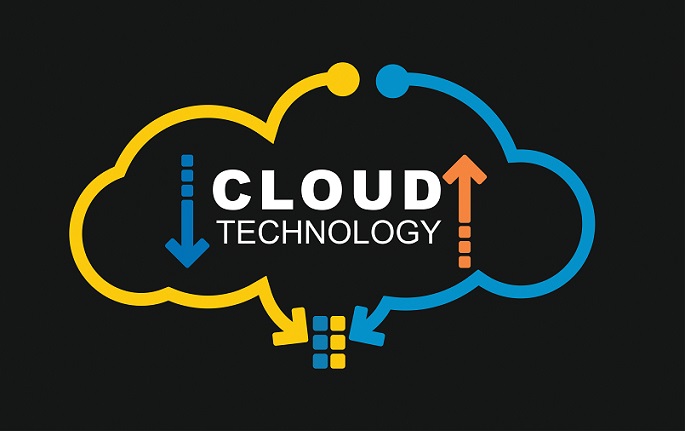
Intuitive property management software facilitates creating and managing work orders, either through a ticketing system, or some other method. Successful deployments integrate the entire workflow connected with the process, right from raising the issue, assigning work to the relevant service provider, keeping track of work execution, and invoicing. This spares property managers from the hassles of manual monitoring and tracking.
Advanced systems come with the ability to incorporate images and videos, facilitating visual work orders, property viewing, and more. Such innovative functionality helps property managers get more work done without the time-consuming activity of making site visits.
Reporting Capabilities are Integral to Software for Property Management
Another crucial consideration for sound property management software, regardless of the functionality, is the reporting capabilities on offer. The ability to generate dynamic reports easily saves property managers time and enables them to stay on top of the game. The greater insights on offer contribute to improved customer satisfaction as well.

The best software for property management facilitates dynamic reports, in the format of choice, rather than straight-jacketing the reports to a few fixed forms. An intuitive software integrates report with analytic capabilities, allowing property managers to gain insights from raw data in easy-to-consume actionable format.
The property manager’s life will become considerably easier if the software integrates full double-entry accounting, with flexible reports. A spin-off benefit of such functionality is the ability to meet various financial and regulatory compliance requirements.
The Best Property Management Software is Optimized for the Budget
Many enterprises get carried away by the potential on offer and ignore the crucial cost competently. There is no free lunch, and even supposedly free open source software comes at a price to develop and customize. The costs for server space and hosting, and ensuring security is another crucial consideration to decide up front. Successful property management firms engage smart developers who can optimize the features and functionalities within the constraints of the available budget, without sacrificing quality.
Professionally managed real estate investment market is worth $8.5 trillion globally as of last year, but it has traditionally lagged behind in technology. However, innovative companies are changing things and technology is all set to improve the owner-tenant experience significantly via a major technological disruption soon.
Selecting the right software is both a science and an art. Apart from the science of carefully evaluating the feature list and the technical specs, comes the challenging, yet often underestimated “art” of identifying vendors who “fit.” Any software, no matter how robust or comprehensive requires continuous support for upgrades and bug-fixes.
Moreover, implementation is often a challenging exercise, involving training end users and documentation. Choose a software vendor who is competent and has proven their worth in all these facets.
Stay up to date on what's new

Featured Blogs
Stay up to date on
what's new



Talk To Our Experts
Nearly 2.6 billion people across the world today have access to a high-powered smartphone, at all times, and seven out of every ten people will have access to a smartphone by 2020. Android phones constitute a bulk of such devices. Businesses are slowly but steadily discovering the merits of rolling out an outstanding Android app to improve branding and customer engagement. A well-designed app allows the brand to communicate the brand message effectively, and develop a sustainable relationship with the customer.
Here are the ways in which a standout business app allows an enterprise in branding and customer engagement.
Delivers a Streamlined Experience
Enterprises need to be able to assess and refine the usability of the app and identify pain-points such as why high volumes of app downloads are not converting into customer registrations or conversions. They need to quantify the impact of the app experience on the customer’s overall brand perception. 
Making things simple and easy for the customer is a sure-shot way to raise the value of the brand in the eyes of the customer. Brands need to identify pain points in customer interactions and work to mitigate it in all earnest. Rolling out an app invariably helps the enterprise streamline their engagement with the customer.
The best apps are highly focused, based on delivering a specific or much sought-after functionality for the user. For instance, the app could make it easy for customers to interact with the brand, offering an easy way to search the FAQ, do self-service, get in touch with customer support, and more. Such an app plays into today’s overriding sentiment of instant gratification.
An app could also be used as a single point access to the social media pages and other digital assets of the brand.
The best app encourages active feedback and co-opts such feedback in newer versions of the app, with a central focus on improving customer experience and delivering more value to users. An app not updated frequently creates potential compatibility issues when the mobile operating systems are revised, and moreover, users are reluctant to risk downloading or using something seemingly abandoned.
How Business App Offers Proactive Communications
Unlike a website which the user has access every time by typing in the URL, an app once downloaded remains in the user’s phone, and may be accessed conveniently, even when offline. 
When a customer installs an app, the business may send notifications directly to the app, bypassing the often-ignored email inboxes. Such push notifications gain high visibility and also allow the brand to reach out to the customer on a 24×7 basis.
Push notifications are invaluable in grabbing customer’s attention, even when users do not actually use the app. Push notifications boost app engagement by a whopping 88%, with Android users way more receptacle to such notification compared to iOS users. The best push notifications, with the highest click-thru rate, are personalized and contextual, such as being based on the product last viewed by the user, including the user’s name, and co-opting other nuances.
Today’s consumers want information within seconds, and service in double quick time. Very few take the pains of seeking out the brands’ website or social media page. If the customer can be persuaded to download an app as a one-time effort, the brand can easily push the required information and engage with the customer proactively. Customers can get the required information or make the purchase equally easily, creating a win-win situation.
Delivers Deep Customization
The most successful customer-facing apps personalize the user experience. The business co-opts emerging technologies like near field communication (NFC), artificial intelligence (AI) and machine learning to understand the user’s choices and preferences.
Smart marketers leverage the apps location tracking capabilities, beacon and geofencing technology to send location-specific, contextual, and timely data-driven content to customers. A case in point is leveraging beacons to push location-based offers and promotions, promote loyalty programs, and facilitate mobile-based proximity payments.
The Pew Research Center estimates nine out of ten smartphone users in the USA enable location services on their mobile phones.
Complements Brick and Mortar Buying
Many retail businesses now offer apps to can enhance customers’ in-store experiences. The app could, for instance, allow the user to scan the barcode of the product, to check availability, different variants, price, product reviews, and other information. Some businesses also offer the possibility of adding the item to the cart and even ordering the item online, sparing the hassles of queuing up at the till or even carting the item home by oneself.
Customer facing apps go a long way in delivering a consistent and seamless omnichannel experience for the user and integrate the physical and digital world.
Businesses could take a cue from 2016 Coachella music and arts festival, where fans who downloaded the app received out location-based notifications about artists and vendors to attendees, and offered beacon-enabled mobile payments to attendees, sparing the need for a physical wallet.
Another success story worth benchmarking is Domino’s Pizza’s new mobile app which allowed customers in the UK to order delivery or in-store pickup. The app has been downloaded more than 10 million times and resulted in a 24.4% increase in e-commerce sales.
Brands, however, cannot afford to rest on their laurels of having successfully coaxed customers to install their apps. The app itself needs to be updated regularly, co-opting new content and features. App developers also need to remember users are doing the brand a favor by installing the app on their smartphone. The brand should not misuse the generosity by taking up too much space causing the system to hang, or offering vulnerabilities which allow potential hackers access to the smartphone. It takes the services of a sound a competent developer to create sound and robust apps which offers real value to users.
Stay up to date on what's new

Featured Blogs
Stay up to date on
what's new



Talk To Our Experts
DevOps is a markedly different way of doing things compared to traditional software development, with an overriding focus on high velocity. Enterprises adopting the DevOps approach use tools, techniques and practices in a way to deliver services and applications at a fast pace, without compromising quality.
While DevOps is the flavor of the season owing to its obvious advantages, very few enterprises are actually able to execute it right. For the majority of the enterprises, their efforts fall short of expectations. A recent Ponemon Institute survey reveals 74% of surveyed enterprises believing that Hybrid Cloud and DevOps enablement capabilities as essential, or important for their enterprises, but only one in every three enterprises believing they actually have the ability to execute it. Likewise, a whopping 80% of enterprises believe microservices and container enablement to be essential, very important, or important for their enterprise, but only one in four of them believing they have the capability for it.
Here are the key reasons why enterprises struggle with DevOps and hybrid cloud.
The Trappings of Culture
Legacy systems and entrenched work culture pose a big challenge to the successful implementation of DevOps.
Quali’s 2016 annual survey on DevOps and cloud computing ranks company culture as the biggest barrier to DevOps. For DevOps to succeed, enterprises need to inculcate a collaborative culture where stakeholders have shared goals, and are willing to take the initiative. This includes identifying employees ready to be DevOps champions in the organization and entrusting ownership of DevOps initiatives to them. There is a need to sell the initiative to the rank and file employees, convincing them of what is in it for them, and buying their support. The buy-in should be backed up by robust training programmes on the new methods and initiatives adopted.
The Menace of Shadow IT
Shadow IT is a major reason why cloud implementations, and by extension, DevOps end up more costly and less effective than expected.
Many employees, owing to practical exigencies, deploy ad-hoc tools and create silos, incompatible with the rest of the enterprise systems. Such end users bypass the enterprise level IT and cloud management technologies, and communicate directly AWS, Microsoft Azure or other clouds, using native APIs or their own public cloud accounts. The net result is a patchwork mess.
With shadow IT in vogue, the enterprise cloud becomes complex and opaque, and almost impossible to manage. Several CSOs find themselves unable to implement the required security protocols and watch helplessly as things go out of control. They are unable to identify the location of their machines or worse, even their data. They have little or no control over the network layer and even the application layer. Such lack of visibility and control expose the enterprise to cyber-attacks and other shocks.
In an ideal cyber-world, enterprises have a single integrated user interface through which they can view and control the entire environment. The Ponemon Institute survey reveals 68% of respondents lacking such capability.
The Problem of Legacy System
Quali’s survey on the major impediments to DevOps lists testing automation, legacy systems, complexity, and budget constraints in the pecking order of the major impediments to DevOps, after culture. For a majority of the enterprises, success depends not just on delivering on new innovations but also the extent to which they can modernize or upgrade their incumbent software and systems.
About 44% of enterprises find their traditional IT environments too complex for the cloud. Installing new hardware or software to coexist with older systems is always difficult. However, the hybrid cloud model, where some applications reside within the traditional data center and other applications are hosted on public cloud platforms such as Amazon Web Services or Microsoft Azure, offer a viable solution. Such a hybrid-cloud based model co-opts legacy infrastructure and applications in the DevOps plans. 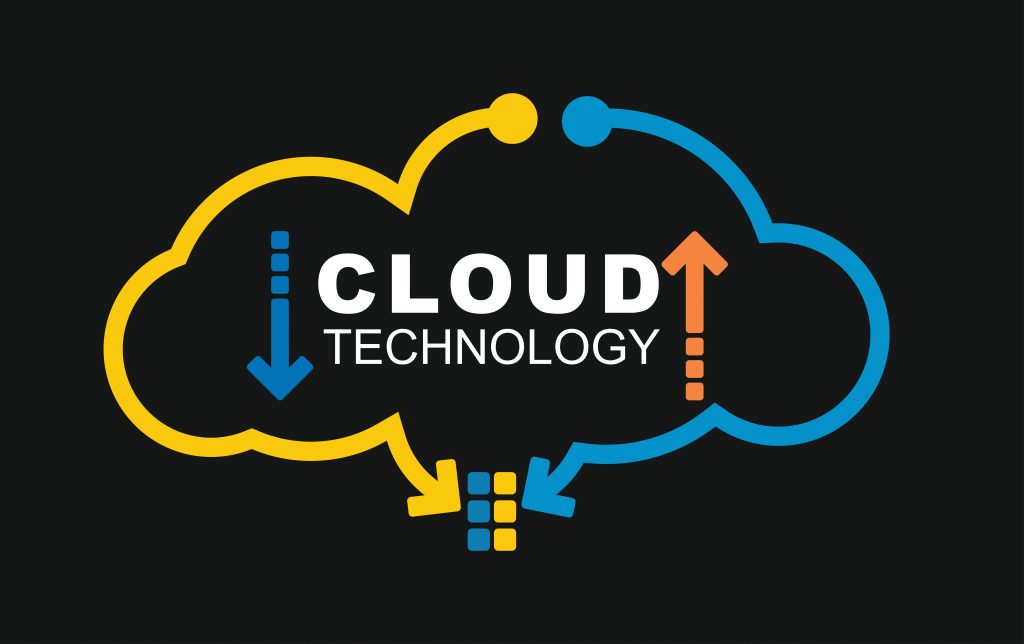
Hybrid IT usually develops organically, without the involvement of IT or security, as shadow IT sets in. It requires management with an iron first to end turf wars and demolish silos.
Enterprises which succeed in DevOps display a high level of hybrid cloud maturity. They use an integrated cloud management platform (CMP) for provisioning, capacity rightsizing, automation, cloud governance, workflow orchestration, self-service, single-pane-of-glass visibility, and cost management. Newer CMP 2.0 platforms go a step ahead and reduce the friction and complexity associated with microservices, containers, cloud-native applications, and DevOps.
Challenges of Integration – Hybrid Cloud and DevOps
Developers deploy different tools for their DevOps efforts. The most popular tools in use include Jenkins, Docker, Puppet, and Chef. the favorite tool of the developer may however not be the best to integrate various systems and applications running within the enterprise. The net result is a fragmented toolset adoption, which leads to loss of control, and also adds to the costs.
Lack of central governance and automation are key stumbling blocks towards the smooth implementation of DevOps.
A sound DevOps plan requires:
- A clear and solid architecture based on on-premises, cloud, and containers, early on in the process.
- An action plan co-opting milestones and well-defined deliverables
- Standardized and automated cloud sandboxes and other tools.
- Due attention to test automation
Cost-Benefit Analysis
While DevOps and the cloud offer many benefits, implementation comes at a price. Many DevOps initiatives can be pricey, and failing to factor in the price upfront can lead to the project stalling midway, and a half-baked implementation, which may make things worse than before.
While many open source solutions abound, does not mean free. The enterprise still has to pay development and often support costs as well. Most enterprises also underestimate the cost to integrate the existing enterprise ecosystem and resolving the ensuring operational complexity.
The average DevOps and microservices enablement costs of an enterprise is $34 million per year, which works out to about 23% of the average per-capita annual enterprise cloud management budget.
Related to the budget is top management support. Getting top management buy-in upfront is an important prerequisite for DevOps success. Top management listens to numbers, and as such, the benefits need to be quantified, in terms of dollar spend. Done right, DevOps offer innumerable benefit to the enterprise, but done wrong, the investment and the effort go down the drain!
Stay up to date on what's new

Featured Blogs
Stay up to date on
what's new



Talk To Our Experts
Transparency is the flavor of the season, as businesses understand the tremendous benefits and value addition it offers to stakeholders. One sector which especially benefits from a fresh breath of transparency is the real estate industry.
Emerging technology drives transparency in reality, at all levels. The widespread application of real estate disruption gives stakeholders, from fund managers to real estate agents and from investors to end users’ critical insights into not just static information regarding the legality surrounding the property, but also live and actionable information on the actual performance and status of the building.
Integrated Big Data
Information with regards to ownership prices, occupancy levels, and more are critical when making investment decisions in real estate, especially in new markets. However, the availability and quality of such information have traditionally been insufficient and suspect.
Technology is slowly but surely offering solutions to such handicaps. Fund managers, for one, are increasingly making data-driven decisions, relying on high-quality real-time data available to them.
The sophistication of cloud platforms and associated applications has become a game changer for the industry. Hitherto, reality-based data came in multiple systems and several silos, making integrations impossible, especially in a timely manner. However, of late, several real estate stakeholders see the benefit of moving to larger single platforms with unhindered connectivity to other systems.
Internet of Things (IoT)
The Internet of Things enables investment managers to monitor the efficiency of properties at a deep level. Traditionally, real estate managers and stakeholders make their investment and operational decisions based on static data, much of which was obsolete by the time it reached the hands of the relevant stakeholder. The deployment of IoT sensors and related technology systems now allow stakeholders to measure everything from CO2 emissions to the performance of HVAC systems, and from the exact number of footfalls in a commercial building to the state of the walls, and much more, with a high level of preciseness and relevancy. Several new-gen buildings are now fully digital, with all information monitored and processed from a central cloud-based database, accessible anytime, anywhere.
Drones
The deployment of drones enables inspecting buildings at a much deeper level, compared to what human eyes or static cameras can offer. The deep insights offer new perspectives on the real asset to investment managers and other stakeholders Drones can enter hard to access places and make explicit the exact status of key installation such as pipes and roofing. It also enables potential buyers to get a real feel for the facility or land, as opposed to ground level cameras.
Blockchain and Digital Tools – Real Estate Disruption
Technology now allows stakeholders to develop comprehensive real-time database regarding the use and ownership of buildings and other real assets.
Here, Blockchain enables a big push. The Blockchain distributes multiple copies of the database across a network of computers, removing the need for intermediaries who store the information. The model also ensures the integrity of the database and enhances security manifold. The net effect is a fresh level of transparency for transactions. Blockchain also transcends national borders and propel open data, which could help semi-transparent markets leapfrog the normal process of transparency.
Leading global level real estate companies such as JLL have complemented the technology push, by introducing tools based on emerging technologies. Online marketplaces, online property management tools, increasing digitalization of local agent practices, self-service apps for clients, precise digital mapping, building inspection using drones, e-contracts, and much more are manifestations of such a trend.
Macro-Level Initiatives
At the macro level, transparency in real estate prices increases accountability and quality of governance and promotes an overall productive business environment. Several countries across the world are now making a push towards transparency. The push for transparency is in part, the fallout of the Panama Papers revelations, which broke out in early 2016. With real estate been associated with money laundering, black money and several other vices, organizations and watchdogs such as Transparency International began to place the sector under greater scrutiny. As such, stakeholders of the industry have no option but to make the fight against corruption a priority. Transparency is increasingly seen as the tool which enables such a fight.
A good case in point in India’s RERA (Real Estate Regulatory Authority) which aims at making explicit the full price of the property, regulating brokers, rendering clarity on building classifications, and several other particulars, aimed at curbing corruption and “black” money. Likewise, UKs proposed beneficial ownership register and European Union’s Fifth Anti-Money Laundering Directive are other cases in point.
Technology is central to transparency initiatives. The United States, one of the most transparent property marketers in the world, has adopted technology in real estate faster than anywhere else, and other countries are fast catching.
Dubai, with a slew of tech initiatives such as building classification project, improved regulatory procedures, new and enhanced online apps for managing contracts and broker information, and unified lease forms offer a good case study on how to apply technology to infuse transparency in the real estate sector. Another good case study is Netherland, which has pushed innovation around blockchain and open data initiatives.
Transparency in real estate markets not only benefits the direct stakeholders through increased dynamism and productivity gains but also has a profound impact on economic development and the quality of life of citizens. Among other things, it confirms and protects ownership, and keeps a tab on the enforcement of building regulations. The improved efficiency brought about by tech-based tools also allow real estate agents, asset management companies, and other providers deliver better service at lesser costs, enabling them to remain competitive in a highly challenging market.
JLL’s Global Real Estate Transparency Index (GRETI) which tracks transparency in real estate markets reveals the top 10 most transparent markets attract 75% of global investment in the commercial real estate space. It also predicts capital allocations to commercial real estate growing from $700 billion to over $1 trillion within a decade, with increasing transparency a key driver to such gains.
Stay up to date on what's new

Featured Blogs
Stay up to date on
what's new



Talk To Our Experts
- ReachOut Suite corresponds to convenient and affordable field service management software that refine and streamline the entire service cycle.
- Trusted by service businesses of all kinds from pest control to HVAC for its innovative digital field service management capabilities.
- ReachOut is ranked number one by project-management.com on their recent review of the top five field service management software.
ReachOut Suite, a field service management software has been listed number one among the top field service management software (FSM) by project-management.com, a leading web resource of project management.
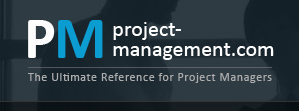
The review team at project-management.com arrived at their conclusion after going through a plethora of FSM software that leads in their respective domains. ReachOut Suite has stood apart from other FSM software in the market with its unique array of features. What makes it different from the rest is the adoption of a SaaS model combined with the latest cloud and mobile technologies.
Embedded inside ReachOut are features that automates critical tasks in field service management such as schedule management, inspection, ticketing etc. Streamlining of processes on a whole new level take place giving service businesses a novel approach to deal with their daily chore of scheduled works. The review team especially noted this crucial aspect of the software, which remains a key reason why ReachOut Suite was mentioned on the top of the list.
Besides, the customer ticketing system, inspection and audit management were the other notable features that gave ReachOut an edge over others. Actually, the project-management.com team based their assessment not only on the features but in regards to the functionality for different aspects of FSM. This was kept in priority and all the listed software went through a meticulous evaluation of this very aspect of functionality.
ReachOut managed to tick all the boxes regarding employee productivity improvement, customer satisfaction, communication and better utilization of resources. The 24/7 customer support provided along with can quickly tackle any queries, support, and grievances of the customers. Project-management.com especially lauded the functional capabilities of ReachOut in extending to the diverse areas of field service management alongside its rich customization features and the ability for white labeling.
Comparison with other Field Service Management Software
ReachOut Suite underwent an extensive review alongside four other leading FSM software currently popular. Scheduling and management software that was reviewed in the list include:
- Jobber
- ServiceTitan
- HouseCall Pro
- Service Fusion
These software were evaluated based on their features, functionality, compatibility, and user-friendliness. Each of them excelled in specific areas such as the two modules of ServiceTitan for office and the field. HouseCall Pro integrates a convenient mobile application and web backend whereas Jobber equals when it comes to work order management.
They are ranked in terms of their performance and how much productive that they actually prove to be among service businesses of all kind. ReachOut was highlighted in the review also for the affordability of the platform. And comparing to the other FSM software listed, ReachOut edges it out when it comes to the actual pricing.
ReachOut Suite has stayed true to its affordable promise by offering a pricing model. By signing up, businesses can get their first three users forever free with accessibility across all its features. Adding users and upgrading the packages are as simple as ever when scaling up is necessary.
Conduct Inspections and Manage Work Orders Easily – ReachOut Suite.
Stay up to date on what's new

Featured Blogs
Stay up to date on
what's new



Talk To Our Experts
A lawyer juggles many cases and a plethora of information. Much of the information has to be sorted for relevancy, and processed on a real-time as and when it becomes relevant. The consequences of a crucial document or evidence not filed in a timely manner can mean the difference between victory and defeat. In such a state of affairs, a case management software is indispensable for any serious lawyer.
However, not all case management software is equal. A poorly designed software may, in fact, do more harm than good by making work tedious and blocking the easy access to documents.
Here are some key considerations when deploying case management software.
-
Go Cloud
On-premises is passé. Security and confidentiality, two critical reasons why many enterprises still preferred on-premises suites until not too long ago are now effectively addressed by the cloud. The cloud is not equally, if not more secure than any connected on-premises solution. In addition, the cloud delivers several unbeatable advantages such as easy scalability of resources, anytime and anywhere availability, and more. For small firms, the cloud is also much more affordable. Not only do they save the costs of deploying on-premises servers and related infrastructure, they are spared of the hassles of maintaining their suite and can focus on their core cases more intensely.
Law firms can simply pay the subscription, login, and start using a cloud-based case management suite. They can do away with the time delays of deploying the on-premises infrastructure, the hassles of identifying and hiring an IT consultant, be spared of the worries of updates and security patches for the software and do away with all related hassles. What’s more, they can access the suite easily even when on the move, when commuting, when at the court, or even when at collecting or investigating evidence in the field.
-
Look into the Feature List
All practice management software offers certain basic features such as contact management, matter management, task management, document management, calendar, time and billing module, and more. However, the devil lies in the details. Consider the document management module. While one suite may feature an integrated document management system, another suite may simply offer a connector to Dropbox or some other external system.
In addition to such basic features, there are invariably a host of additional features, which may be optional add-ons. Some examples include email management modules, accounting module and more. Many lawyers would especially want a billing module integrated, allowing them to bill their clients in a timely and accurate way, improving both revenue and cash flow.
There is no gold standard in regards to what constitutes the best list of options. What is best depends on the specific needs of the law firm, at any point in time. For instance, questions such as whether the suite integrates seamlessly with the existing email or calendar system do it offer sync with the existing accounting suite, or should the system have an integrated accounting module, all become critical factors when deciding on a practice management suite. Make sure the suite not only has all the required features but also implements it the way it is required.
-
Consider Integrations
No case management software can cover everything a lawyer needs to do, and if it does, it would anyway become bloated and unwieldy. A lawyer, during the course of his work, invariably relies on a multitude of software such as Microsoft Word, Microsoft Outlook, Gmail, third-party document management systems , financial management systems, and even systems in use at various courts. The best case management suite facilitates seamless integration with such suites, or at the very least seamless copy-paste of data from such diverse sources.
-
Consider Usability
Many lawyers make the mistake of ignoring usability and remain blind to the feature list on offer. Usability is just as important as the feature list. A good UX, accessibility through intuitive mobile apps, a lean design which speeds up thing, ability to enter data offline, and more are critical requirements for a smart suite to complement the highly competitive and dynamic nature of today’s work environment.
The best case management suite is self-evident and easy to use by a lay user without having to go through training or even a steep learning curve. It allows the user to access the required information in the way the user prefers. IT would also automate whatever is required, including auto-population of fields, making the life of the lawyer considerably easier.
-
Do Not Ignore Backend Design
While feature list and UX are important considerations, it should never be the only consideration when selecting a practice management suite. Consider the design and architecture of the suite, and ask pressing questions such as the security layers available, whether the suite complies with the ethical stipulations governing advocates and as stipulated by the State Ethics panel, whether the suite gives unrestricted access to the uploaded data, how the data is backed up, how and where the data is stored, and more. 
A case in point is all Ethics Panel require lawyers to keep client data and information confidential. This raises an onus on the lawyer to make sure the selected solution is capable of upholding confidentiality and withstanding breaches. As such, the reputation of the provider, in terms of their ability to keep sensitive data confidential and protect the suite from breaches should always be a key consideration.
Lawyers can organize themselves better by adopting a practice management suite. The suite helps them reduce time spent on administrative activities, allowing them to bill more hours and generate more revenue. It also helps them do their tasks in a timely and more accurate way, improving client satisfaction while reducing overheads at the same time. However, such benefits realize only with a sound practice management suite, delivered by a competent company who are not just technically competent but have an established reputation of having successfully implemented projects for clients.
Stay up to date on what's new

Featured Blogs
Stay up to date on
what's new



Talk To Our Experts
Experts from Fingent offer insights on various topics ranging from enterprise app development, the compatibility of Odoo for businesses and tips to scaling down enterprise app development cost. We also focus on the significance of the academic research in driving innovation. Let’s dig in!
Enterprise App Design: Does iOS Fare with Android in terms of Security? | ReadWrite
With Apple constituting a major share of the world smartphone market, iOS tend to be the most preferred platform in enterprise app development. But there are stronger competitors in the current market competing directly with iOS. Google-owned Android have fared remarkably well in the mobile market largely due to its swift integration with Google’s extensive services, flexibility, and support.
So, will iOS fare with android in terms of security?
How Academic Research is Driving Innovation and Growth | Emerald Insights
The acceptance of academic research among enterprises has been low, not because of its lack of value, but due to underutilization. Propelling innovation within an enterprise rests chiefly on relying on information derived from external sources. In this case, academic research from universities seems a valuable cache of information that enterprises can depend on for using in all their crucial processes and operations.
How Compatible is Odoo for Your Business | This Host Rocking
Having an ERP system integrated into your workplace can guarantee efficiency and productivity. So, what can you gain from integrating one into your business? An ERP solution can lift the burden of operations by shifting to a software-based model. It allows you to streamline, organize and integrate your core business processes.
Tips to Scale down on Enterprise App Development Costs| DZone
Enterprise apps are extremely popular now. However, developing apps can turn out to be a costly endeavor. Here are some tips to keep costs in check, while still developing high-quality apps. Developing large scale enterprise apps can be incredibly expensive, so take a look at how you can cut costs with these tips.
What you didn’t know about creating iPhone apps | BEST IN AU
Developing apps for iOS is something you can learn from a certified developer training program or by using tutorials on the web. But mere technical knowledge is inadequate if you fail to comply with the regulations of the App Store. Knowing about these can ensure that your app never gets rejected from the App Store citing compliance issues. Besides, it can provide a certain amount of guarantee about your app’s success and popularity. Here are some crucial things they never say but you should understand when making apps for iPhones.
Stay up to date on what's new

Featured Blogs
Stay up to date on
what's new



Talk To Our Experts
In this monthly insight post, we’re covering some of the major buzzwords in the world of enterprise software. We look at how AI can be potentially be misused in the enterprise, impact of machine learning on enterprise software, how technology can help legal aid services and how prepared are you to overcome the misuse of AI. We also look at how safe is crowd testing platforms for enterprises.
How Prepared Are You To Overcome The Misuse Of AI | CloudTweaks
The introduction of AI has been a great boon for enterprises. Compared to all other fields, the enterprise sector has remained open to all technological trends. However, the potential for misuse of AI still exists and is the one reason why you should be informed about it. This can help you take the necessary precautions to overcome the misuse of AI if it happened within your organization.
How Enterprise Software Is Getting Intelligent Through Machine Learning | Towards Data Science
Artificial Intelligence, Machine Learning, and Neural Networks have become the focal points of innovations and developments in computing. They have inched closer to achieving their full potential and are currently finding applications in almost every field of human activity from agriculture to transportation. Furthermore, this evolving forms in computing had a notable effect in the enterprise field too.
How Technology Can Help Legal Aid Services Run More Efficiently: a technologist’s view | Law-Tech
Using technology to serve legal aid is nothing new. A huge corpus of legal material and resources are available online. Emerging technologies enable legal aid services to become more efficient than ever before.
Are Crowd Testing Platforms Safe for Enterprise? | Technology Advice
As a much better alternative to outsourcing, crowd testing is an entirely different approach that still provides insights into the level of functionality and any possible defects in the software. Crowd testing puts QA testing into a community of freelance software testers and users from around the world, who evaluate the software and give timely feedback to the developers.
5 top facts how IoT integration is influencing custom software development | TechGenYZ
With over 28 billion connected devices expected to go live by 2021, IoT is all set to unleash a major shake-up to the internet as we know it today. The coming IoT wave will drown all areas of Information Technology. Custom software development is no exception.
Stay up to date on what's new

Featured Blogs
Stay up to date on
what's new



Talk To Our Experts
Cybersecurity statistics reveal that cybercrime is one of the greatest threats to any business. Not accounting for it can result in a loss of crucial and sensitive data and large recovery costs. With increasing attacks on critical infrastructure, stringent security requirements must be in place to protect businesses from threats. Today, hackers have become more formidable thus being informed about cybercrime will prevent a loss of data and profits later down the road.
This infographic will cover the scope of vulnerabilities that could be present in your company and ways to safeguard the IT Infrastructure:

Investing in cybersecurity is essential for protecting your business. Contact us today to plan a cybersecurity strategy especially for your business.
Stay up to date on what's new

Featured Blogs
Stay up to date on
what's new








